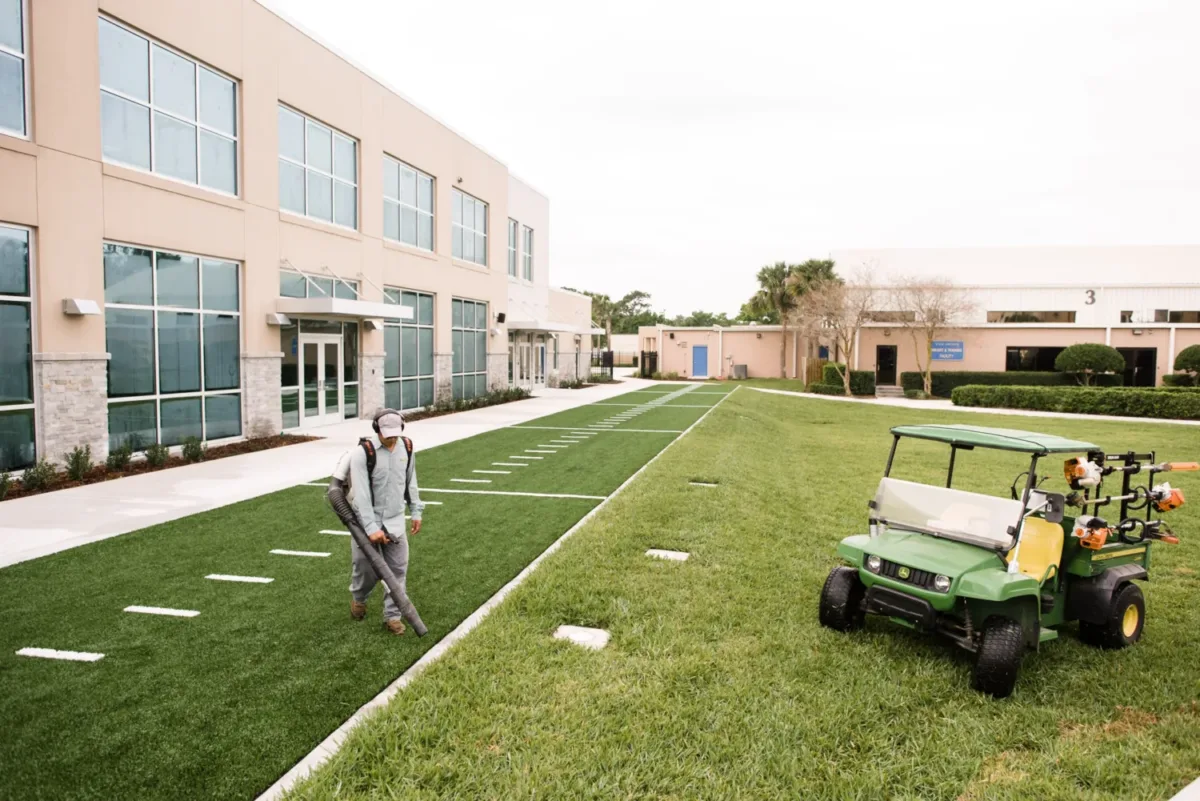Top 10 Ways to Savings
Owning a business involves understanding a variety of operational costs along with ways to reduce them. Among these, workers’ compensation insurance stands out prominently. More than just an expense, this type of coverage involves the well-being and safety of your employees and can also directly influence your company’s bottom line.
Navigating the direct and indirect costs of workers’ comp policies can be challenging, especially for employers that experience a high number of claims. Luckily, there are a variety of strategies employers can use to help control workers’ comp costs without putting employee safety on the back burner.
Let’s take a closer look at the National Council on Compensation’s Insurance (NCCI) statistics provided by the National Safety Council (NSC):
- The average cost of an average workers’ compensation claim is $41,353.
- Diving into specific causes, motor-vehicle crashes come in as the most expensive, averaging $85,311 per workers’ compensation claim.
- Other major contributors include burns with costs averaging $54,173, falls or slips at $48,575 and incidents where workers were caught, coming in at $44,588.
These numbers, while daunting, highlight real challenges, and the financial implications of overlooking workplace safety. But trust us, there’s a way you can make an impact when it comes to reviewing and reducing costs related to your workers’ comp policy.
If you’re wondering how to reduce workers’ compensation costs effectively, you’ve come to the right place! Here are the top 10 ways to achieve this:
1. Partner with your workers’ comp carrier
Understanding the details of your workers’ comp policy is crucial to maximizing your investment. Alongside basic claims handling, most carriers offer a range of support services that can help you improve worksite safety, control overhead costs and establish proactive policies. Leaning on the knowledge and expertise of your carrier may also allow you to anticipate the indirect costs of employee injuries and absenteeism before they impact your bottom line.
2. Know your experience mod rate (and ways to reduce it)
An employers’ experience modification rate (often referred to as the “mod rate”) is an important metric that plays a large role in calculating your policy premium. It also provides insight into your company’s past injuries and potential future risks, allowing you to tailor your safety programs more effectively. The frequency and size of your claims determine your overall rating, meaning that safety-conscious employers usually pay lower premiums. One of the best ways to reduce your mod rate is to develop a safety program that focuses on preventing avoidable accidents and eliminating known hazards.
3. Establish your business as a drug-free workplace
Implementing a Drug-Free Workplace Program (DFWP) demonstrates your company’s commitment to providing a safe and productive work environment, while also helping reduce liability. Substance abuse is a significant contributor to workplace accidents. Establishing and promoting a drug-free environment can greatly reduce the risk of accidents, ensuring that employees are alert and attentive during their duties. Incorporating a DFWP may also qualify you for policy discounts and further reduce workers’ compensation costs.
4. Double-check employee classifications and adjust your payroll
Details matter, especially when it comes to money. Errors in employee classification and payroll data can lead to higher workers’ comp premiums, so give those classifications and payroll figures a second look. If you notice any discrepancies, your carrier can help adjust your classification categories and ensure your policy premium is accurate. For the best results, we recommend auditing your employee classifications at least once per year.
And don’t forget: Always keep your insurance agent informed. Whether it’s a shift in payroll, classification or even year-to-date claim count, every change affects your premium costs. Stay ahead, be transparent and communicate assertively to directly influence and reduce your workers’ compensation costs.
5. Identify workplace hazards and prioritize injury prevention measures
While the foundation of every successful safety program starts with comprehensive safety programs, businesses must first identify and prioritize proactive employee injury prevention measures. Mitigating injuries not only minimizes the financial strain on your organization but further cements your commitment to employee safety and well-being. Here’s how you can step up your game:
- Identify workplace hazards: Proactivity is key. Every worksite has its own unique safety challenges, which is why employers should incorporate hazard identification and mitigation into their workplace programs. Conducting regular job hazard analyses and worksite inspections helps businesses locate existing and emerging threats, develop proactive policies and keep their employees safe on the job. For the best results, all present hazards should be carefully documented and discussed in a formal training document. Regularly review and identify potential workplace risks, adapting to changes in work processes and new equipment introductions.
- Conduct ergonomic assessments: Evaluate workstations for ergonomic design to reduce the risk of musculoskeletal injuries.
- Invest in robust safety equipment: Beyond basic PPE, consider investments in advanced safety equipment tailored to your business operations. Whether it’s specialized machinery safeguards in a manufacturing unit or slip-resistant flooring in high-traffic areas, these investments can make a tangible difference in preventing accidents.
- Promote employee wellness initiatives: Champion wellness programs centered on physical fitness and mental well-being to reduce workplace injury risks and boost overall productivity and morale. In addition, strive to reward employees for their safety efforts as this improves morale, productivity and – most importantly – reduces on-the-job injuries.
6. Develop effective safety programs and policies
Another way to reduce workers’ compensation costs is a comprehensive safety program. Areas that help you tailor your safety programs more effectively include:
- Risk assessment: Before implementing safety procedures, identify potential hazards in daily operations. Knowing where a workplace accident is most likely to occur is the first step in prevention.
- Safety policies and procedures: Written safety programs and policies are essential to reducing workers’ comp claims and educating employees about on-the-job hazards. Every new hire should be provided with a hard copy of your policies upon their start date and must be kept informed of any major updates. Since safety programs are always evolving, it’s important to draft clear and concise safety policies, to ensure every employee knows the procedures to follow to prevent work-related injuries.
- Training: Regular safety training sessions can help in preventing workplace injury. Equip your workers with the knowledge they need to operate safely, no matter their role.
- Safety equipment and PPE: Investing in the right safety equipment and personal protective equipment (PPE) is crucial. This not only prevents injuries but also showcases your commitment to employee safety.
- Incident reporting: Encourage employees to report any incidents or near-misses. This helps in identifying patterns and areas of concern, potentially preventing a more serious future incident.
- Regular safety program audits: Regularly evaluating your safety protocols ensures that they’re up to date with industry standards and effectively preventing workplace accidents.
- Continuous improvement: A safety program shouldn’t be static. As your company grows and changes, so should your approach to safety. Regular feedback from employees and the latest guidelines from entities like OSHA can help refine your approach.
Check out our safety toolkit that includes sample written programs.
7. Develop a robust return-to-work program
As the name suggests, a return-to-work program is designed to help injured employees get back on their feet quickly and safely is a key part of controlling your workers’ comp costs. Generally speaking, the longer your employees remain out of work, the higher your claims costs will be. Implementing a RTW program has two main benefits for employers: companies safeguard against escalating costs, and employees benefit from a structured, supportive reintroduction to their job functions. With that in mind, make sure to share your RTW program with employees, supervisors, and managers, so they know what’s expected through every step of the process.
8. Report injuries as quickly as possible
If and when accidents happen, employers should immediately report any injuries to their workers’ comp carrier to ensure their claim is handled quickly and efficiently. Late reporting can not only substantially increase claim and medical costs, it can also delay an employee’s return to work. The sooner your injury claims can be closed, the less uncertainty your business will need to contend with.
9. Pay attention to signs of fraud
Workers’ comp fraud, though rare, can be a major drain on your company’s time and financial resources. With over $7 billion lost annually due to workers’ compensation fraud, awareness is key. Foster an environment where employees at all levels understand the importance of fraud and are encouraged to alert management of any suspect activity. If you suspect claimant fraud, contact your insurance carrier and as quickly as possible. This proactive approach avoids unnecessary claim costs and makes your reporting process more transparent.
10. Take advantage of FFVA Mutual’s no-cost safety services, training courses and online resources
At FFVA Mutual, we believe that protecting workers is a continuous process. That’s why we offer expert safety services, training courses and online resources at no additional cost to our policyholders. We’ll help you keep pace with the latest trends in workplace safety and employee wellness that could transform your workforce for the better.
Follow the Pathway to Savings
Let’s wrap things up by putting all our insights on how to reduce workers’ compensation costs into an easy-to-follow plan. Introducing our Pathway to Savings, rooted in three straightforward pillars: Communicate, educate and motivate.
Pillar 1: Communicate
- Keep in touch with insurance agents: Simply put, staying connected can save you money. Whenever there’s a change in your company — like payroll adjustments or new hires — give them a heads-up.
Pillar 2: Educate
- Regular safety training: Ensure everyone knows how to keep safe at work. Periodic training sessions are a must.
- Understand your EMR rate: This number helps you see how you’re doing compared to past years and where you can potentially save.
Pillar 3: Motivate
- Prioritize safety: Make it a part of everyday work life. When safety is the norm, everyone benefits.
- Reward safe practices: A simple shout-out or a monthly recognition can make a big difference in keeping everyone focused on safety.
There you have it: A clear and actionable pathway to savings. Keep these points in mind and you’ll be well on your way to a safer, more cost-effective workspace. But don’t go just yet …
Additional resources from FFVA Mutual
A proactive approach to safety protects your employees and shields your bottom line. With FFVA Mutual at your side, you have a repository of insights and expertise on workers’ compensation, claims and essential safety resources.
Don’t wait for unforeseen circumstances to dictate your next move. Equip and empower your team with the knowledge they need today. For any queries or to learn more about workplace safety, simply ask us a safety question. Your steps today can redefine your company’s tomorrow.






























